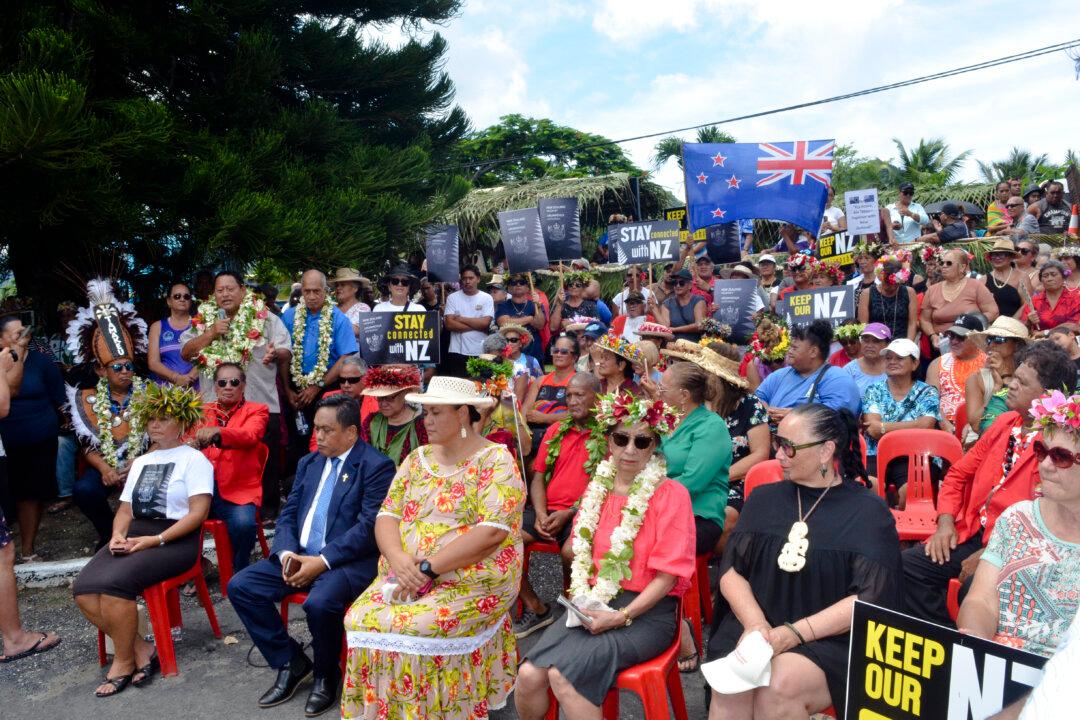Beijing’s lead in apparel exports to the United States has been reduced in favor of other Asian nations, with experts attributing the decline to the U.S.–China trade war and a growing international awareness of the Chinese regime’s human rights abuses, among other factors.
The report, published in September, found that the decrease in the Chinese share of the market was attributable to several factors, with the most notable being tariffs imposed by Washington and increased attention on the human rights violations against Uyghurs in forced labor camps in the Xinjiang region.
Experts have predicted that President-elect Donald Trump’s second term will further affect the U.S. market—not only for big exporters and geopolitical adversaries such as China, but also for smaller countries.
During his first term, Trump placed tariffs on hundreds of billions of dollars’ worth of Chinese goods in response to Beijing’s unfair trade practices. This led to a significant decrease in China’s share of U.S. imports, starting in 2018. The tariff war and trade tensions made many U.S. firms at least partially move away from China, according to the USITC report.
Human rights concerns in the Xinjiang region also pushed Congress to pass the Uyghur Forced Labor Prevention Act in 2022, which prohibited importing goods produced wholly or in part with Uyghur forced labor, according to the report.
Priyajit Debsarkar, a British-based author and geopolitical analyst, told The Epoch Times that the pandemic also contributed to the decrease in Chinese garment exports to the United States, and he agreed with the report’s findings that the Chinese regime’s negative track record on human rights further convinced the U.S. market to look for exporters that comply with its standards.
“I think there is an underpinning cause of violence and exploitation of the East Turkmenistan or the Uyghur region in China, and there’s forced labor,” Debsarkar said. “So those have contributed to this drop, definitely.”
The USITC report found rising wages in China also made products more expensive and contributed to fewer exports to the United States. Especially between 2016 and 2018, U.S. importers increasingly became aware of the importance of sourcing products outside China, the commission said.

Other Asian Nations Make Gains
The United States, the largest single-country apparel importer in the world, with total imports of $79.3 billion in 2023, increased imports from South Asia and Southeast Asia between 2013 and 2023.While China’s share dropped from 37.7 percent to 21.3 percent, Vietnam, the second-largest supplier during the same period, witnessed its imports increase from 10 percent to 17.8 percent, according to the USITC report.
The apparel industry has continued to expand in the Southeast Asian nation this year.
Vietnam and China “share similar comparative advantages in specific industries, such as textiles and clothing, and machinery and electronics,” the paper states. “This suggests that Vietnam is a good candidate for a second-best source country for U.S. imports, as tariff hikes increase the cost of importing from China.”
Other countries that profited from the Chinese plunge include Bangladesh, which gained the most in the garment industry by capturing 9 percent of U.S. imports in 2023. India had 6 percent of the market, Indonesia 5 percent, Cambodia 4 percent, and Pakistan 3 percent, per the USITC report.
Debsarkar, who has special expertise in Bangladesh affairs, said that Bangladesh has been able to benefit most from the Chinese export slump because it has a huge pool of labor, both skilled and unskilled, for the ready-made garment industry.
“Another key driving force is that a lot of the establishments in Bangladesh and the units, the factories, they are compliant with Western regulation,” he said, adding that this includes regulations in Europe, the UK, North America, Australia, and New Zealand.
Many of the countries that gained from China’s loss, including Bangladesh, have focused on improving their industry infrastructure in the past decade or more to make it compliant, according to Debsarkar.

Global Market Effects
Debsarkar said that while the pandemic didn’t affect the Bangladesh textile industry, new policies under the next U.S. administration could do so.Sayedad Hossain, director of the Bangladesh-based think tank National Institute of Strategic Strategies, told The Epoch Times that Bangladesh is preparing to face the potential trade challenges likely to arise because of new U.S. tariffs.
“While such measures could disrupt global trade, Bangladesh views this situation as an opportunity to deepen its trade ties with the United States and gain competitive advantages in specific sectors, particularly ready-made garments,” Hossain said in an email.
According to Hossain, historically, Trump’s trade policies have been focused on bilateral deals. Bangladesh, he said, can leverage this situation by proposing a reciprocal trade agreement to secure tariff-free access for its goods in the U.S. market.
This could include offering zero-tariff access to U.S. goods in return, which would be workable because U.S. products are expensive and would be unlikely to flood the Bangladeshi market, he said. Another measure could involve expanding the market share for Bangladeshi products in the U.S. market.
“Securing tariff-free or reduced-tariff access could significantly enhance the competitiveness of Bangladeshi exports, particularly in ready-made garments, which currently faces an average 15.70 percent tariff in the United States,” he said.
“Vietnam could become an alternative exporter for some products such as textiles, but also face risks from China shifting its exports of some products such as steel to Vietnam, worsening its trade deficit with China,” BMI stated.







